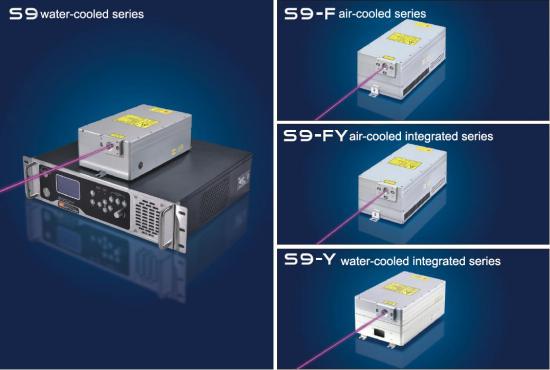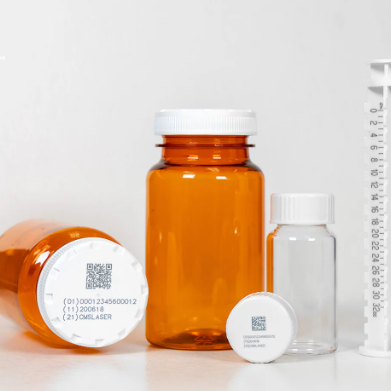Latest Blog
355nm UV Laser Marking Ideal for Medical Devices and Pharmaceuticals
Oct 31 , 2022355nm UV Laser Marking Ideal for Medical Devices and Pharmaceuticals
Marking is used in a wide range of industries and products, from bar codes on milk cartons to alphanumeric batch numbers on microelectronic packages. Infrared lasers are well-proven as a superior option to traditional ink printing in many uses, but both technologies still present significant disadvantages in some important applications, particularly in the medical device and pharmaceutical industries. Although ultraviolet (UV) laser marking is proven to avoid the limitations of both ink and IR lasers, their higher cost of ownership have previously limited their adoption, even in high value applications like medical devices, disposables and pharmaceuticals. Fortunately, advances in the reliability and cost of ownership of ultraviolet lasers have changed this situation. This article explains how and why UV laser marking is now poised for fast growth in these markets.
The Special Needs of Medical Marking
Manufacturers of medical devices and implants need to mark their products to enhance traceability – for economic reasons and for long-term quality control, to prevent counterfeiting, fraudulent returns and unregulated distribution, and to comply with increasingly strict government regulations. For example, some countries already require all medical device manufacturers to mark their products with some type of UDI (unique device identification), including when and where each was made. Marking also allows tracking; if any part is found to be defective, the entire batch can be flagged and recalled if necessary. Anti-counterfeit is a growing concern as all kinds of medical devices (and drugs) are targets for highly organized groups.

As a consequence, device and implant manufacturers have several marking requirements. First the mark must be permanent. Second, the mark must not interfere with product functionality, including avoidance of contamination or introduction of allergens. And third, the mark ideally should be hard to counterfeit.
Pills (tablets, capsules and caplets) and their packaging also need to be marked for much the same reasons. Typically, this includes a product identifier, the manufacturer’s logo, and possibly the date of manufacture or lot number.
The Limitations of Traditional Marking Methods
The dominant method for marking pharmaceuticals, medical devices and their associated packaging has long been ink printing. Pills have traditionally been imprinted using one of two methods. In the first method, a mark is molded into a pill during the compression of the powder in the manufacturing process. This method is limited, however, as it allows only for marks that are simple and large, usually containing two to five characters or an elementary symbol. The second traditional method is offset rotogravure printing, which has significant drawbacks such as cleanliness of operation, the use of solvents, and extra downtime to clean and maintain equipment. Also, any type of ink printing that involves mechanical pressure can be a problem for the newer soft gel formats. The overall print quality is poor, often limiting the amount of information that can be encoded. Packaging and wrapping have also traditionally been ink marked — usually by inkjet or pad printing. In terms of costs, printing is attractive to manufacturers because the capital equipment cost is relatively low. However, the ongoing cost of consumables (ink) is often substantial.

For medical applications, the main drawback of printing is that it is often easy to remove or alter printed marks (especially if they’re on a paper label). This means that marks can become difficult to read after shipping, handling or storage, and also permits purposeful counterfeiting. In addition, although the inks themselves are usually non-toxic, high speed printing involves mechanical handling that may require lubricants or solvents that could possibly contaminate the product.
Medical devices and disposables are commonly made of metal and/or plastic components. Although these can be printed, conventional ink printing will generally not make a very permanent mark and is mainly used with implants and disposables to mark the sterile sealed packaging.
Medical products have been directly marked for some time using infrared lasers. Laser marking is a non-contact method that involves either producing a color change on a surface or within the bulk of the material, or a change in surface relief (e.g. engraving) or texture that is easily visible. Laser marking usually employs (CO2, solid state, or fiber) lasers operating in the infrared. The marking process itself is a thermal interaction; material is heated until it bleaches, carbonizes or ablates in order to produce a color contrast. Nearly all plastics directly absorb the far infrared CO2 output; absorptive additives are sometimes used to facilitate this process with near infrared, solid state or fiber lasers. However, this heating can alter the chemical structure of the material in the heat-affected zone (HAZ) such as charring, and also produces some surface relief. This texture can offer a place for bacteria to settle and grow, and may be difficult to clean. Laser engraving cannot be used with most metal (or plastic) medical devices for this reason, because it deliberately creates surface relief.
The Unique Advantages of UV Laser Marking
An alternative method is to employ the UV (355 nm) output of a frequency tripled, diode-pumped, solid-state (DPSS) laser. UV light is absorbed more strongly than longer wavelengths by most materials. Moreover, the laser photons directly break interatomic bonds in the plastic substrate causing a cold, photochemical interaction with any fillers or pigments, thus eliminating any heat affected zone (HAZ) or changes to the surrounding material. For most plastics that appear white, this pigment is TiO2, which strongly absorbs the UV light and then undergoes a change in crystalline structure. This renders the substance dark, producing a smooth, highly legible mark within the bulk material, rather than at the surface.
Because the mark is actually subsurface, it doesn’t provide a possible home for bacteria, and it is nearly impossible to alter or deface without destroying the material itself. And, the higher absorption in the UV means that material can be processed with lower laser power (or pulse energy). Finally, since UV light can be more tightly focused than IR, ultraviolet lasers support complex, high-resolution marks, such as 2D barcodes.
Despite these advantages, UV lasers haven’t been widely employed in medical marking applications in the past because of their cost. But, over the past decade, companies such as Coherent have made substantial improvements in UV laser lifetime, reliability and output power. These have been achieved through improvements in laser design, materials and the implementation of stringent cleanroom procedures during production. Also, automated assembly methods and economies of scale as sales volumes have increased have helped to reduce UV laser price by a factor of nearly five over this period. Plus, some manufacturers have developed UV DPSS lasers specifically optimized for cost-sensitive marking applications.
Some Marking Examples
The applications laboratory (Luebeck, Germany) is equipped with several lasers, including an ultraviolet marking laser (MATRIX 355). It has been used to mark several different materials commonly used in medical devices and disposables. Some of the examples are shown here.
Silicon rubber is commonly used in medical devices in both a transparent and opaque white form. One of the advantages of UV marking is the ability to focus the laser inside a transparent substrate. This is useful in silicone tubing used for intubation or other intravenous application because it allows marking on the inside surface of the tube. In addition to dimensional information, the mark must include the original storage date; in the US and other countries, the tubing must be used within three years of this date. When the process is properly optimized, it creates a high visibility mark with no effect on the outer surface (the surface that comes into contact with the patient).
Pills represent a very high volume challenge where speed and throughput are just as important as mark quality. Test marking on various types of softgel and hardgel capsules was performed in order to determine the maximum achievable marking speed. For characters of 1.5 mm height on softgel capsules, the highest speed was <0.024 seconds/character. Mark legibility was excellent in all cases. For hardgel capsules, a 2D barcode of 1 mm x 1 mm could be reproduced in <0.2 seconds. In contrast, while ink marking can be fast, it also requires a drying time of 1-2 seconds before the pill can be handled without smearing the mark.
Two other marks produced using the MATRIX 355 laser are shown here. Figure 3 is an example of a high-contrast 2D barcode (8 mm x 8 mm) produced in just 2 seconds on a curved pill bottle made from high-density polyethylene (HDPE). Figure 4 shows alphanumeric marks on gelatin of the type used in some of the latest ‘blister’ packaging for pharmaceuticals. These marks were created with a depth of 30% (0.17 mm of 0.58 mm thickness) with a scan speed of 1.3 m/s. The color change marks show good contrast with no material ablation.
Summary
In summary, UV laser marking is shown to be a superior solution applicable to medical devices, disposables, pharmaceutical, and associated related packaging. The advent of DPSS lasers optimized for these marking applications now also makes UV marking economically attractive.